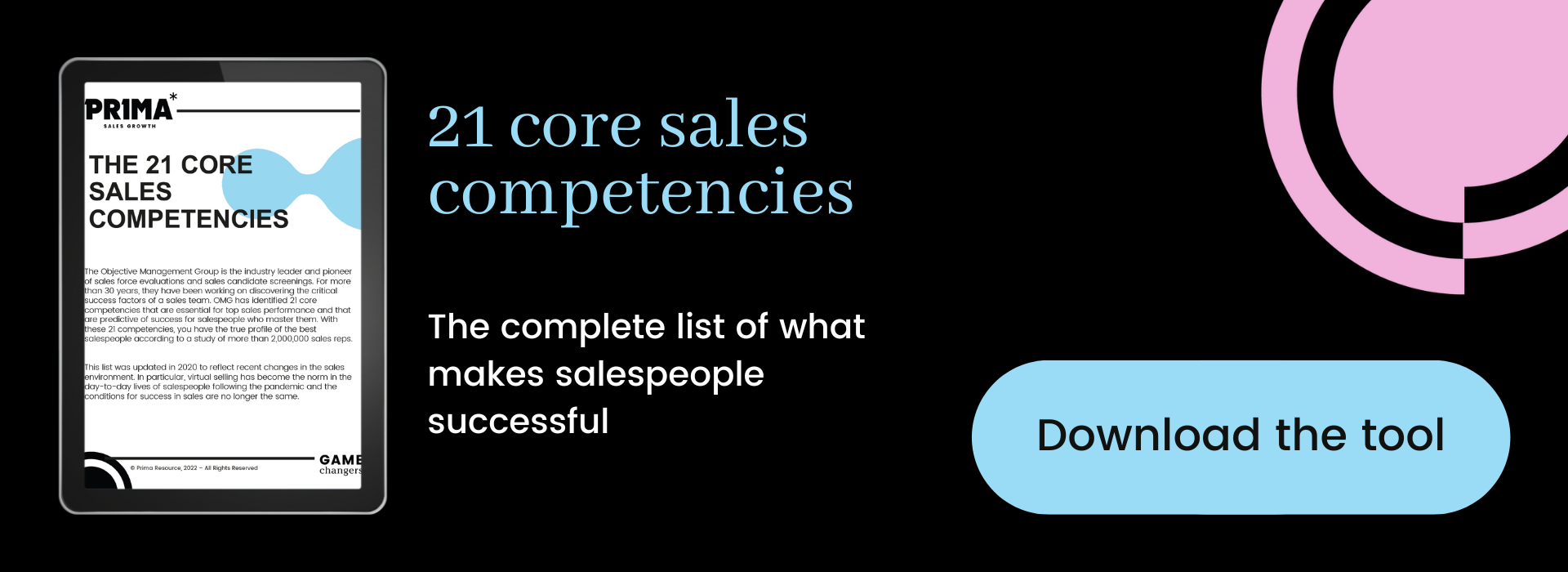What are the mistakes to avoid at trade shows and events?
1. Chatting with colleagues
Some sales representatives see events and trade shows as a chore and a long period of time spent standing at the booth.
Attending a sales event is primarily a business development activity, so internal conversations should remain marginal.
2. Handling day-to-day business
A business trade show is not the place to answer emails, make calls or have virtual meetings.
When you are at a business event, make sure you are 100% available to visitors.
3. Distributing brochures
The objective of a sales event should never be to distribute brochures, but rather to initiate discussions and collect information about prospects.
4. Spending too much time with clients
Events are an opportunity to have conversations with new prospects, so don’t lose sight of that goal.
You already know what opportunities exist with your customers, so put the effort into developing new opportunities.
What are the best practices for making an event attendance profitable?
With the following 9 recommendations, you have an excellent roadmap to make your events a success.
1. Establish clear objectives
It is essential to set quantifiable goals for the number of qualified opportunities to be obtained, the number of first meetings confirmed and the desired results (in dollars, in contracts) from the meetings that follow.
Usually, individual goals are set for each representative, but also collective goals.
2. Set the rules
- Define a schedule for booth attendance
- Clearly assign roles (reception, demonstrations, service…)
- Communicate the behaviors to avoid (managing emails at the booth, conversations on the phone…)
- Communicate the process for collecting information from prospects
- Communicate the key messages and approach to follow with prospects
Once again, preparation is essential to ensure a quality experience for visitors, but also to ensure that objectives are met.
3. Prepare properly
To be successful, it’s not just about being at the booth, it’s important to have done some prep work that includes:
- Scheduling an out-of-office message in your email box to notify that you will be responding to inquiries after the event
- Blocking time in your calendar in the days following the event to follow up with prospects
- Publicize your participation in the event on LinkedIn (individual posts in addition to company posts)
4. Invite customers and prospects
To ensure that you can meet clients and prospects in person, invite them in advance so they can make arrangements.
If the event offers free tickets to exhibitors, be sure to allocate all of those tickets to prospects first.
5. Start the conversation
It only takes one or two good questions to start a conversation with a visitor. Generally, people are quite open to starting a discussion, because that’s what they’re there for!
Just go up to them with a simple question like:
- What brings you to the conference today?
- What drew your intention?
- What are the most important issues you are facing with respect to (position something in your industry) right now
Avoid :
- Can I help you?
- Do you know our company?
- Are you looking at a particular product?
6. Qualify visitors
Here we’re talking about qualifying, but not in the traditional sense of whether the company a visitor works for fits your ideal customer criteria – it’s about qualifying by identifying whether the person has a problem that can be solved.
If you don’t have the right person in front of you, you can try to get the decision maker’s contact information to communicate after the show; or better yet, get an introduction.
Your questioning strategy is just as important at a trade show as it is in a sales meeting. The right questions asked at the right time will tell you if you have a potential customer, if they have a problem and if they want to solve it.
7. Add value to the conversation
On the other end of the spectrum, salespeople often see it as an opportunity to showcase their products or services. Presentations and demonstrations are the activities in which salespeople are most comfortable.
However, don’t fall into presentation mode too soon!
Yes, it is relevant and even necessary to share some information in this context, but your role is to learn more about the visitors’ problems and needs.
Put yourself in consultative selling mode rather than presenter mode and add value to the conversation with questions.
8. Collect contact information from prospects
There are several ways to do this:
- Use your cell phone to enter the prospect’s information
- Use printed cards to fill out by hand
- Have terminals with tablets at your booth
- Offer a contest with prizes to win
- Have a QR code to scan to download documents
Whatever method you use, it’s essential to collect prospects’ contact information and be able to add context to the conversation for the next steps.
9. Follow-up after the event
What’s the point of doing all the good work you did before and during the event if you don’t spend the time necessary to follow up with the prospects you met!
For follow-ups, be sure to put the conversation with the prospect in context and set a next step.
If you can’t reach prospects over the phone, I recommend creating a short, personalized video to email them.
I always track my conversion ratios closely and especially want to know what investments are paying off. Historically, 20% of the leads I meet at an event become sales opportunities.
Final word
Good luck!






